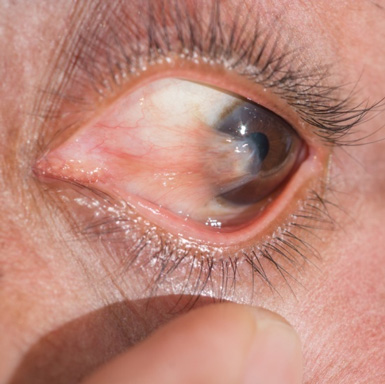
PTERYGIUM
What is a Pterygium?
A Pterygium is a non-cancerous growth which starts within the clear thin tissue (conjunctiva) of the eye and covers the white part (sclera) of the eye. It usually begins to grow on the sclera closest to the nose and slowly extends across towards the cornea. It can occur in one eye or both eyes.
What Causes a Pterygium?
A Pterygium is usually associated with prolonged exposure to UV light as well as dusty and windy environments. People who spend a lot of time outdoors such as builders, surfers, farmers, fisherman and people living near the equator are more likely to develop a Pterygium.
What are the Symptoms of having a Pterygium?
Usually a Pterygium has no symptoms; however you might experience the following:
- Red eye
- Irritation or foreign body sensation
- Constant watery eyes
- Burning and itchy eyes
- Reduced or blurred vision
What are the Treatment Options for Pterygium?
Pterygium doesn’t usually require any active treatment if symptoms are only mild. If the condition causes irritation or redness, the Ophthalmologist can treat it with lubricating eye drops or ointments. Anti-inflammatory steroid eye drops can also be used to reduce the swelling.
If the Pterygium causes persistent discomfort or interferes with the vision or cosmetic appearance, then surgery may be considered by the Ophthalmologist.
Pterygium Surgery
The procedure is often performed in a day surgery setting.
Topical anaesthetic is applied to the operated eye and a small incision is made in the conjunctiva. The Pterygium is removed and replaced with a small section of the patient’s own conjunctiva (from under the eyelid). This conjunctival membrane is then held in place with Tisseel glue or stitches. This method is called conjunctival auto graft.
After the surgery, patients usually go home with a patch over the operated eye and are given eye drops to be used as instructed by the Ophthalmologist. Their operated eye may feel slightly uncomfortable from the stitches but usually feel better a week after the surgery. It is important for the patient to attend post operative appointments and follow instructions by the doctor.
Risks and Complications of Pterygium Surgery
The main complication of Pterygium surgery is the re-occurrence after removal. Conjunctival autograph is a procedure which minimises the risk of Pterygium re-occurrence.
Other risks of Pterygium surgery include:
- Corneal scarring
- Corneal perforation
- Inducing astigmatism after surgery

How to Prevent a Pterygium from developing?
The best way to prevent or slow down the progression of Pterygium is to protect your eyes from dust, wind and UV light. Wear appropriate eye wear such as UV-protected sunglasses or goggles as well as wide-brimmed hats.
